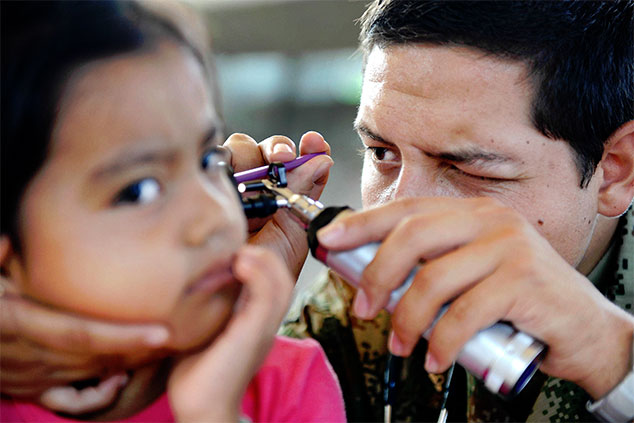
When most of us think of hearing loss, we picture our grandparents struggling to understand even the clearest verbal prompts. Yet, hearing loss can and does strike at any age with growing numbers of younger adults suffering from its effects. If you’re struggling to make sense of conversations in noisy environments or finding yourself turning up the TV volume, you might be suffering from hidden hearing loss.
What is Hidden Hearing Loss?
Hearing loss has historically been detected through a test called an audiogram, which detects damage to the hair cells inside of our ears. When these cells are damaged, your ability to detect sounds at certain frequencies becomes impaired.
However, it’s now been determined that hearing loss beings before those hair cells are damaged, making it “hidden.” The damage occurs to the fibers in the auditory nerve that connect to those hair cells, making it possible to hear in noisy environments. So, even if you pass an auditory test with flying colors, there may be some hidden hearing loss.
Hidden Hearing Loss in Young Adults
Hearing loss among young adults is becoming increasingly more common. The World Health Organization (WHO) recently reported that as many as 1.1 billion young people worldwide are at risk of hearing loss from such things as personal audio devices, night clubs, and exposure to other loud environments. The newest concern for young adults relates to the issue of hidden hearing loss.
In a recent study of young adults published in PLOS-ONE, all in the study passed an auditory exam with no issues. Yet, the group that was consistently exposed to loud sounds (music students) had trouble hearing sounds tested at higher frequencies. This group that was identified with hidden hearing loss and had particular difficulty understanding speech in noisy environments.
Hearables Technology and Hidden Hearing Loss
The good news is that not all hidden hearing loss is permanent or irreversible. Some research has found that hidden hearing loss, if identified quickly can be treated with a growth factor called neurotrophin 3, which will repair some of the damage to auditory nerve fibers. Hidden hearing loss can also be both prevented and treated through the use of revolutionary new hearables technology.
Hearables are much more than just wireless earbuds. This smart listening technology can interface with electronic devices via Bluetooth, and it provides several benefits in our increasingly over-stimulated world. The best of these products both offers sound protection and gives users the ability to control their environment.
For example, NuHeara’s IQbuds are a hearable device that accomplishes exactly this. The company’s experts hail from an industrial sound protection background instead of simply tech or entertainment. The IQbuds can amplify speech above background noise, which is a feature of some high-end hearing aid devices. IQbuds lack the stigma, however, of hearing aids and appeal to a segment of the market, younger adults, who are interested in wearables and who may also be suffering from the effects of hidden hearing loss.
Hidden hearing loss is a growing difficulty among younger adults and, unfortunately, is only the precursor to more permanent hearing issues. Revolutionary hearables, are not only changing the way we use technology but are potentially addressing an important health concern.